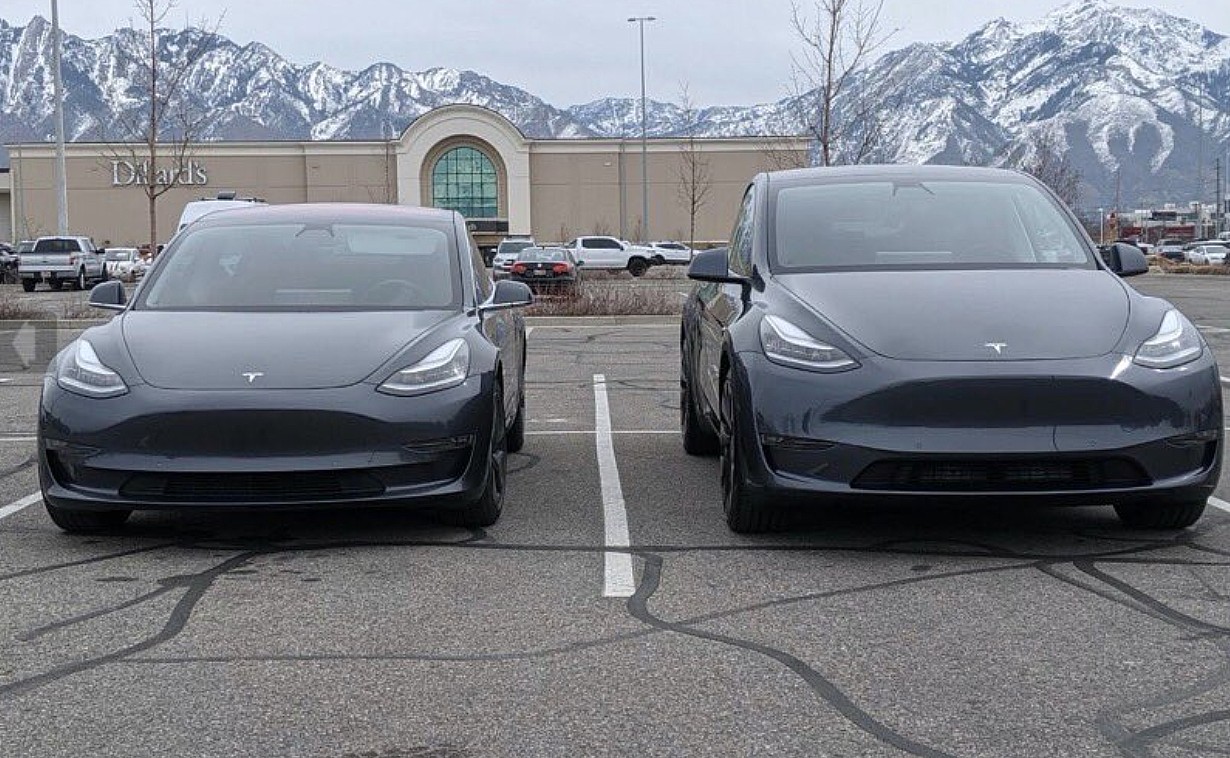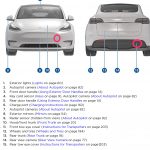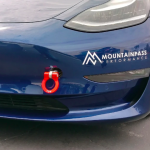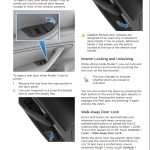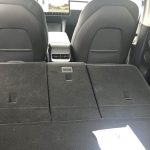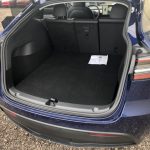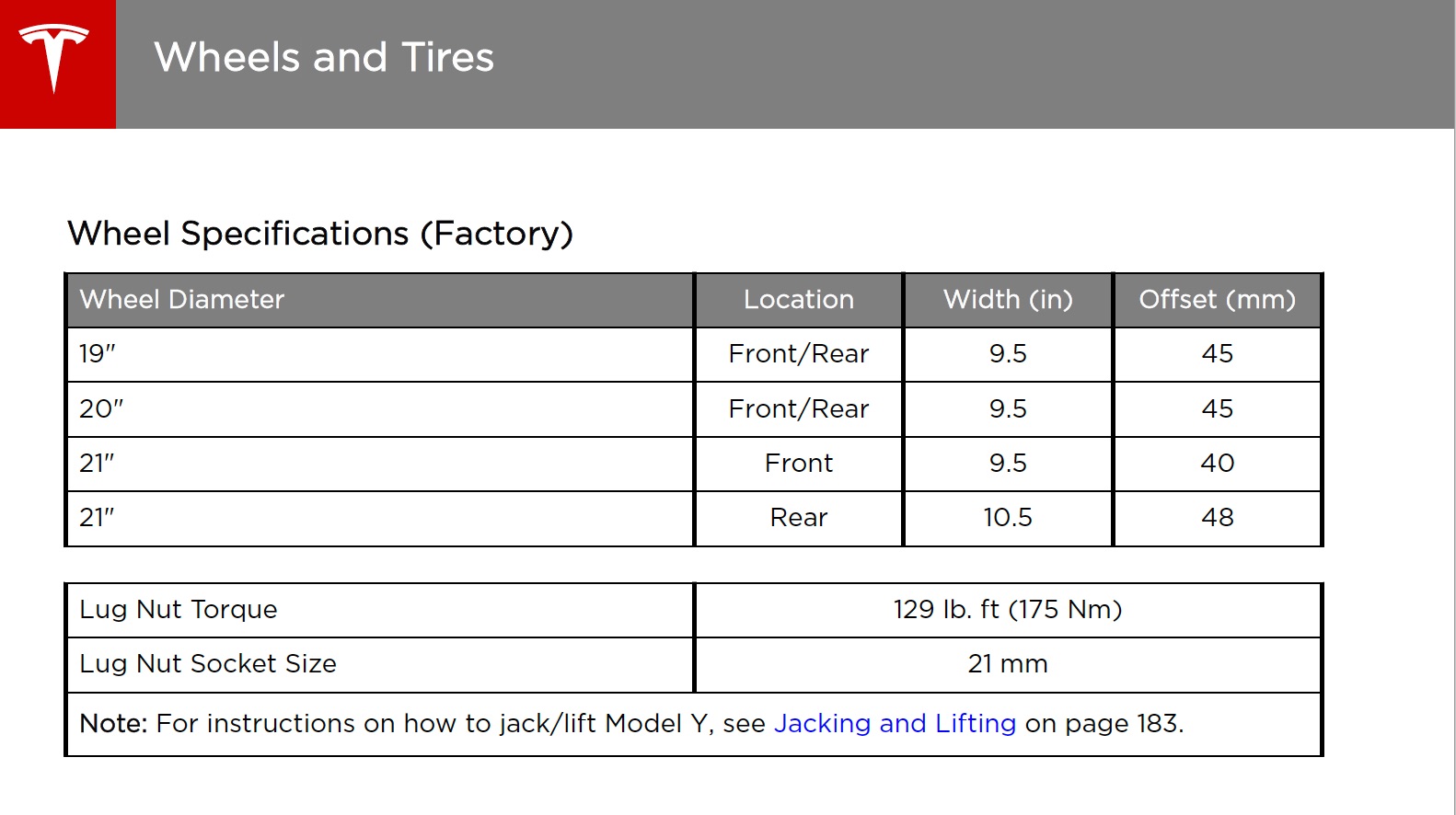The Tesla Model Y and Model 3 are both designed to cater to the mass market. Both vehicles share 75% of their parts since they’re optimized for quick production. But even vehicles that are three-quarters similar have key differences, some of which were revealed in the recently-released Tesla Model Y Owner’s Manual.
From their tow eye hooks to their speakers to their wheel configuration, the Model Y and Model 3 feature subtle differences that make them distinct from each other. Here are 12 of these key differences, as outlined by Tesla owner-enthusiast Tesla Raj in a recent video.
We’ve highlighted some of the key differentiators below.
Tow Eye Hook
Tesla has added a second tow eye hook to the back of the Model Y for added convenience when towing the vehicle from either end.
In times when a Tesla Model Y may need to be transported on a flatbed truck, the vehicle can be placed in Transport Mode and winched by way of a tow eye hook and onto the back of a flatbed truck while its wheels remain free-rolling.
Compared to the Tesla Model 3, which is equipped with a tow eye hook only in the front of the vehicle, Model Y has a cover on the right side of the rear bumper to conceal the second tow eye. This can be seen in the vehicle’s diagram in the Model Y Owner’s Manual.
- Tesla Model Y frunk tow eye (Credit: Ben Sullins)
Emergency Door Release Handles
The Tesla Model 3 met some criticism when it was produced with emergency release handles only available on the front doors. Tesla addressed the issue in Model Y by adding emergency release handles on all doors. The Model Y rear emergency release handle is located under a flap inside the bottom of the rear door pocket.
Emergency release handles are only required in situations where the vehicle does not have power. “In the unlikely situation that Model Y has no power, these electrically-powered buttons at the top of the door handles no longer work. However, the doors are equipped with mechanical releases so that you can still open them,” notes Tesla in its Model Y Owner’s Manual.
- Tesla Model Y emergency door release (Credit: Tesla)
- Tesla Model Y rear door emergency release (Source image: Eweaver1983271 via Reddit)
Trunk Space, Rear Seats, and Legroom
No surprises, but the trunk space for Model Y is drastically larger than that of the Model 3. Factoring in Model Y’s taller hatchback design versus Model 3’s traditional trunk and the difference in cargo space becomes obvious. Model Y boasts a massive 68 cubic feet of cargo volume compared to 15 cubic feet for Model 3.
The rear seats of the Model 3 and Model Y are also quite different in the way that the all-electric sedan’s fold 60/40. Model Y, on the other hand, has three seats, all of which could be folded down individually. The Model 3’s rear seats can also be folded down only through the rear, while the Model Y provides two ways to fold down its second-row seats and includes a center passthrough when the middle seat is folded down.
Model Y has two switches on the left side of the trunk that gives owners ease of access to the second-row seats directly from the trunk. Activating the switch will fold-down each corresponding rear seat.
The Model Y seats appear to be the same design as the Model 3, however, are mounted on risers for better legroom and overall comfort than Model 3. Rear seat legroom in the Model Y is improved over Model 3 by roughly 15%, although it looks like some of it was borrowed from the 2% reduction in front legroom when compared to Model 3. The headroom between Model Y and Model 3 is relatively the same and differ only by 1-2%.
Tesla Model Y vs Model 3 Leg Room
- Front: Model Y – 41.8 in (1,063 mm) vs Model 3 – 42.7 in. (1,085 mm)
- Rear: Model Y – 40.5 in (1,029) vs Model 3 – 35.2 in (894 mm)
- Tesla Model Y trunk (Credit: Eweaver1983271 via Reddit)
- Tesla Model Y rear seat fold down levers (Credit: Tesla)
- Tesla Model Y rear door emergency release (Source image: Eweaver1983271 via Reddit)
Wiring System and Heat Pump
Arguably the most notable difference between the Model Y and Model 3 in terms of core design improvement is the wiring system and heat management. Tesla added a heat pump to the Model Y, which could help the all-electric crossover maximize its range during winters. In addition and as pointed out by TeslaRaj in his video, the diagram for Model Y appears to show a single track for wiring as opposed to Model 3 which has two.
Teslarati will explore both of these points in detail in an upcoming story.
Wheel Size and Specifications
The Tesla Model Y’s wheels are 9.5 inches wide, which are slightly larger than the Model 3’s 8.5-inch wheels. It should be noted that the Model Y Performance comes with a staggered wheel setup, with the front wheels being 9.5 inches and the rear wheels being 10.5 inches wide.
See more: Tesla Model Y with Performance Upgrade Uberturbine Wheels
Rear Speakers
Both the Tesla Model 3 and the Tesla Model Y are fitted with a suite of premium speakers that provide a great listening experience for owners. They do have differences in the way that the Model 3’s rear speakers are located on a shelf behind the rear seats, while the Model Y has its rear speakers on the trunk hatch.
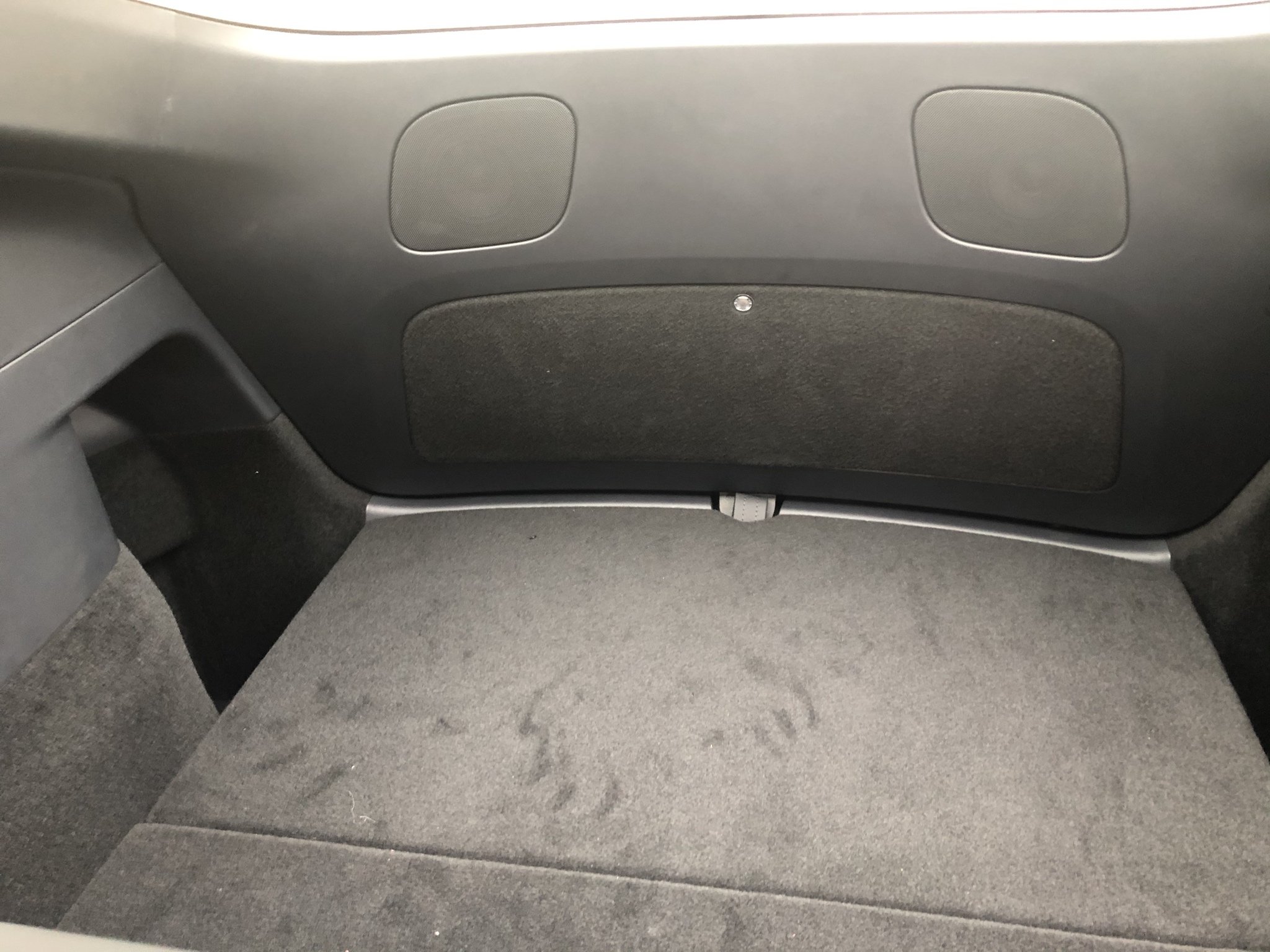
Coat Hooks
Both the Tesla Model 3 and the Model Y come with coat hangers, though the all-electric sedan’s is located on the crossbar that goes between the B pillars. The Model Y, with its seamless glass roof, has its coat hangers in the second row.
Inductive Phone Charger
The Tesla Model Y is equipped with a wireless charging pad, as well as USB-A and USB-C slots. On the other hand, the Model 3 is fitted with wired charging options and a dual USB-A slot. Owners would likely appreciate the Model Y’s wireless charging features, as most flagship and midrange mobile devices today come standard with wireless charging. See Tesla Model Y wireless phone charger.
Rear USB ports
The USB ports of the Model 3 and Model Y in the second row are also different. The Model 3 is fitted with two USB-A ports, while the Model Y is equipped with two USB-C ports. Considering that the two vehicles share 75% of their parts, it would not be surprising if Tesla ends up equipping the Model 3 with USB-C ports in the future.
Tesla notes in the Model Y Owner’s Manual that the rear USB ports are for charging devices and do not communicate with the vehicle like the front USB ports that can be used for recording via TeslaCam.
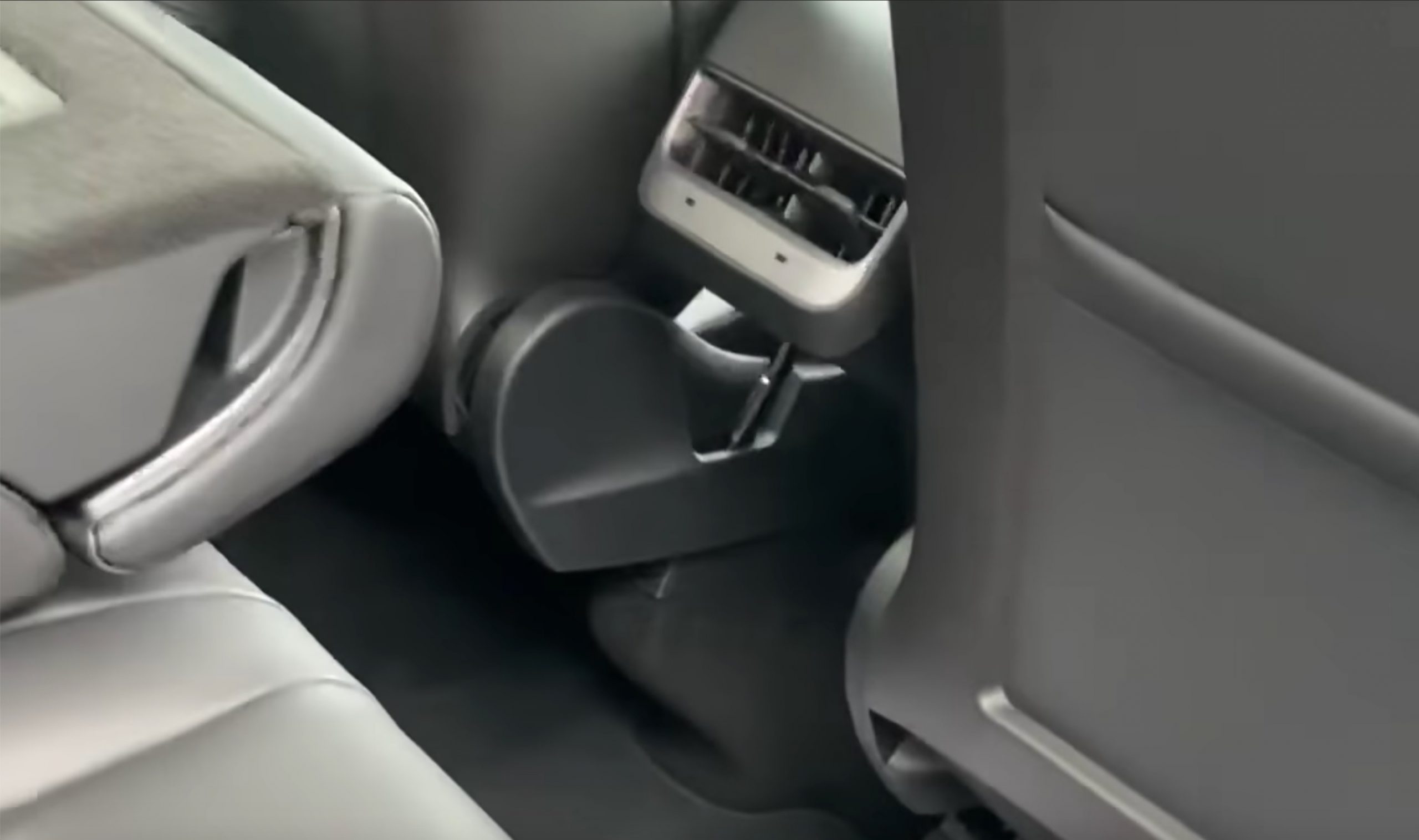
Power Liftgate
The Model Y is equipped with a power liftgate, which provides owners an automatic and convenient way to open and close the vehicle’s rear hatch by way of the center touchscreen or Tesla mobile app. This feature is not present in the Model 3, which is one of the reasons why aftermarket power truck mods became quite popular in the Tesla community.
See Tesla Model Y’s power liftgate in action.
A big thanks to Tesla Raj for compiling this info. Check out this video below.

News
Tesla 2025 Holiday Update: Here’s what it includes, and what it’s missing

Tesla has finally announced the features for the 2025 Holiday Update, which includes a wide variety of new inclusions that are both functional and just for fun.
The new features are plentiful, but there were a handful of things we were expecting to see based on what we know. We don’t want to sound ungrateful, because there are a lot of great new things on the way with this update.
Here’s what was included:
Grok with Navigation Commands (Beta)
Grok will now have the ability to add and edit navigation destinations, which is a drastic improvement considering Tesla owners had to use their standard voice commands for this in the past.

The utilization of Grok will likely improve the navigation experience by offering some insight into your destination, including reviews and other points of interest nearby.
It will be enabled by using Grok’s “Assistant” personality.
Tesla Photobooth
“Turn your car into a photobooth! Take selfies from inside your Tesla & give yourself a makeover with fun filters, stickers, and emojis. Share with others right from the Tesla app.”
This feature will be available within the Toybox.
Dog Mode Live Activity
When using Dog Mode to keep your four-legged friend comfortable in the car, you’ll now be able to check in on them as it will share periodic snapshots of the cabin, along with live updates on temperature, battery, and climate conditions.

Dashcam Viewer Update
Dashcam clips are awesome, but they’re void of a lot of information, which could be useful in some instances, especially if there is an accident.

Now, there will be additional details included on each Dashcam clip, like speed, steering wheel angle, and Self-Driving state.
Santa Mode
New graphics, trees, and a lock chime are now available.

Light Show Update
A new Light Show, called Jingle Rush, will be available.
Custom Wraps and License Plates in Colorizer
Colorizer will now be known as “Paint Shop” in the Toybox. You will now be able to personalize your Tesla Avatar with window tints, custom wraps, and license plates. Preloaded designs will be available, but owners will be able to use their USB Flash Drives to create one that suits their style.

Navigation Improvements
Changing the order of your destinations will be easier through a new “Favorites” tab, and Home and Work can now be set by dropping a pin.
There will also be “Suggested Destinations,” which will be determined through recent trips and habits while parked.
Supercharger Site Map
Perhaps the most significant feature of the Holiday Update, Tesla is adding a 3D view of select Tesla Superchargers by tapping “View Site Map.”
When navigating to a location with this capability, the site layout, live occupancy, and nearby amenities will be available. Drivers will also be able to choose which stall to Supercharge.

This is only available at a handful of locations currently, but it will expand to more Superchargers as it becomes more robust.
Automatic Carpool Lane Routing
Navigation will include an option to utilize carpool lanes. Your route will automatically choose the carpool lane when eligible.
Phone Left Behind Chime
If the in-car occupant detection system does not see anyone in the car and there is a phone key, or if a phone is left inside the cabin, your Tesla will chime a few seconds after the doors close.
Charge Limit Per Location
You can now save a charge limit for the current location while parked and it will be applied automatically the next time you charge there.
ISS Docking Simulator
In a SpaceX collaboration, Tesla has added this game to its in-car Arcade:
“Become an astronaut and prove your skills by docking with the International Space Station. Control & guide the rocket in this 3D docking simulator game using a set of controls based on actual interfaces used by NASA astronauts.”
Additional Improvements
-
Enable or disable wireless phone charging pads in Controls > Charging (S3XY) or Controls > Outlets & Mods (Cybertruck)
-
Add Spotify tracks to your queue right from the search screen & scroll through large Spotify playlists, albums, podcasts, audiobooks & your library seamlessly, without paging
-
Take the vibes up another level with rainbow colors during Rave Cave. Accent lights color will change along with the beats of your music. App Launcher > Toybox > Light Sync
-
Lock Sound now includes Light Cycle from Tron Mode. Toybox > Boombox > Lock Sound
What’s Missing
There are a handful of features we expected to see with the Holiday Update, but were not included.
Banish Feature
Tesla has been teasing the Banish functionality for quite a few years, but evidently, it is not quite there yet.
Banish will allow owners to get out of their vehicle at the entrance of their destination, and the car will go find a spot and park itself. Some refer to it as “Reverse Summon.”
Apple CarPlay
With all of the rumors regarding Apple CarPlay and then the evidence that Tesla was working to bring CarPlay to vehicles, we really expected it to come with the Holiday Update.
We’re not upset it’s not here, though. Tesla’s in-car UI is significantly better, at least in our opinion.
Parking Spot Selection
One of the biggest gripes about the new Arrival Features with Full Self-Driving v14 is that choosing a set parking spot is not available. This is especially frustrating for Tesla owners who rent or live in townhouse neighborhoods or apartment complexes with assigned parking.
Tesla seems to be working on this based on the release notes for v14.2, where it said future capabilities would include Parking Spot Selection.
News
Man credits Grok AI with saving his life after ER missed near-ruptured appendix
The AI flagged some of the man’s symptoms and urged him to return to the ER immediately and demand a CT scan.

A 49-year-old man has stated that xAI’s Grok ended up saving his life when the large language model identified a near-ruptured appendix that his first ER visit dismissed as acid reflux.
After being sent home from the ER, the man asked Grok to analyze his symptoms. The AI flagged some of the man’s symptoms and urged him to return immediately and demand a CT scan. The scan confirmed that something far worse than acid reflux was indeed going on.
Grok spotted what a doctor missed
In a post on Reddit, u/Tykjen noted that for 24 hours straight, he had a constant “razor-blade-level” abdominal pain that forced him into a fetal position. He had no fever or visible signs. He went to the ER, where a doctor pressed his soft belly, prescribed acid blockers, and sent him home.
The acid blockers didn’t work, and the man’s pain remained intense. He then decided to open a year-long chat he had with Grok and listed every detail that he was experiencing. The AI responded quickly. “Grok immediately flagged perforated ulcer or atypical appendicitis, told me the exact red-flag pattern I was describing, and basically said “go back right now and ask for a CT,” the man wrote in his post.
He copied Grok’s reasoning, returned to the ER, and insisted on the scan. The CT scan ultimately showed an inflamed appendix on the verge of rupture. Six hours later, the appendix was out. The man said the pain has completely vanished, and he woke up laughing under anesthesia. He was discharged the next day.
How a late-night conversation with Grok got me to demand the CT scan that saved my life from a ruptured appendix (December 2025)
byu/Tykjen ingrok
AI doctors could very well be welcomed
In the replies to his Reddit post, u/Tykjen further explained that he specifically avoided telling doctors that Grok, an AI, suggested he get a CT scan. “I did not tell them on the second visit that Grok recommended the CT scan. I had to lie. I told them my sister who’s a nurse told me to ask for the scan,” the man wrote.
One commenter noted that the use of AI in medicine will likely be welcomed, stating that “If AI could take doctors’ jobs one day, I will be happy. Doctors just don’t care anymore. It’s all a paycheck.” The Redditor replied with, “Sadly yes. That is what it felt like after the first visit. And the following night could have been my last.”
Elon Musk has been very optimistic about the potential of robots like Tesla Optimus in the medical field. Provided that they are able to achieve human-level articulation in their hands, and Tesla is able to bring down their cost through mass manufacturing, the era of AI-powered medical care could very well be closer than expected.
News
Tesla expands Model 3 lineup in Europe with most affordable variant yet
The Model 3 Standard still delivers more than 300 miles of range, potentially making it an attractive option for budget-conscious buyers.

Tesla has introduced a lower-priced Model 3 variant in Europe, expanding the lineup just two months after the vehicle’s U.S. debut. The Model 3 Standard still delivers more than 300 miles (480 km) of range, potentially making it an attractive option for budget-conscious buyers.
Tesla’s pricing strategy
The Model 3 Standard arrives as Tesla contends with declining registrations in several countries across Europe, where sales have not fully offset shifting consumer preferences. Many buyers have turned to options such as Volkswagen’s ID.3 and BYD’s Atto 3, both of which have benefited from aggressive pricing.
By removing select premium finishes and features, Tesla positioned the new Model 3 Standard as an “ultra-low cost of ownership” option of its all-electric sedan. Pricing comes in at €37,970 in Germany, NOK 330,056 in Norway, and SEK 449,990 in Sweden, depending on market. This places the Model 3 Standard well below the “premium” Model 3 trim, which starts at €45,970 in Germany.
Deliveries for the Standard model are expected to begin in the first quarter of 2026, giving Tesla an entry-level foothold in a segment that’s increasingly defined by sub-€40,000 offerings.
Tesla’s affordable vehicle push
The low-cost Model 3 follows October’s launch of a similarly positioned Model Y variant, signaling a broader shift in Tesla’s product strategy. While CEO Elon Musk has moved the company toward AI-driven initiatives such as robotaxis and humanoid robots, lower-priced vehicles remain necessary to support the company’s revenue in the near term.
Reports have indicated that Tesla previously abandoned plans for an all-new $25,000 EV, with the company opting to create cheaper versions of existing platforms instead. Analysts have flagged possible cannibalization of higher-margin models, but the move aims to counter an influx of aggressively priced entrants from China and Europe, many of which sell below $30,000. With the new Model 3 Standard, Tesla is reinforcing its volume strategy in Europe’s increasingly competitive EV landscape.
